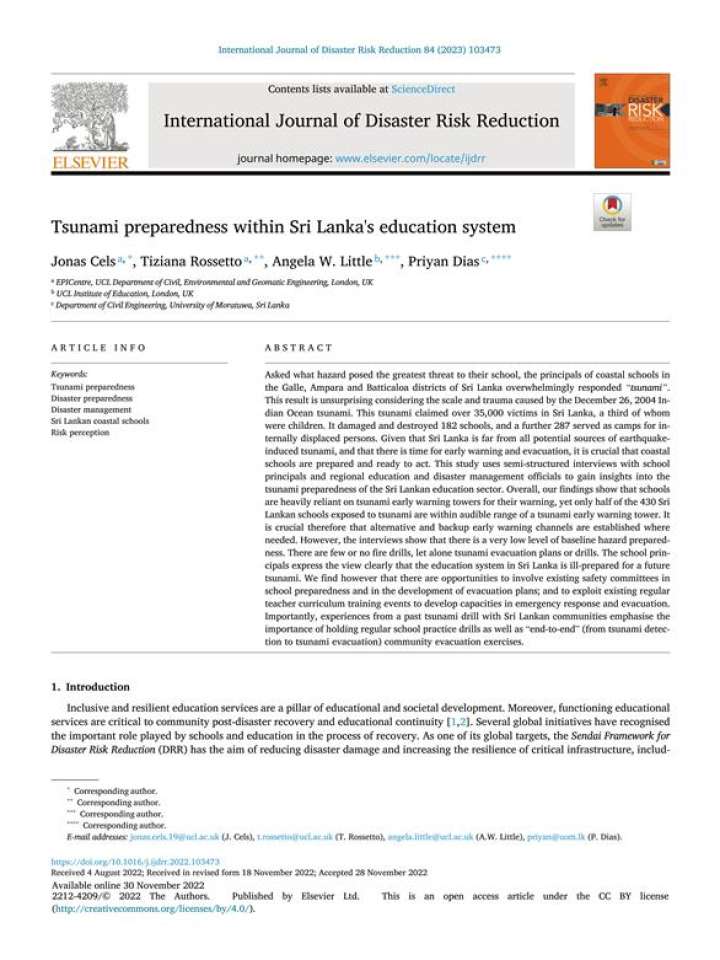Tsunami preparedness within Sri Lanka's education system
This study uses semi-structured interviews with school principals and regional education and disaster management officials to gain insights into the tsunami preparedness of the Sri Lankan education sector. Asked what hazard posed the greatest threat to their school, the principals of coastal schools in the Galle, Ampara and Batticaloa districts of Sri Lanka overwhelmingly responded “tsunami”. This result is unsurprising considering the scale and trauma caused by the December 26, 2004 Indian Ocean tsunami. This tsunami claimed over 35,000 victims in Sri Lanka, a third of whom were children. It damaged and destroyed 182 schools, and a further 287 served as camps for internally displaced persons. Given that Sri Lanka is far from all potential sources of earthquake-induced tsunami, and that there is time for early warning and evacuation, it is crucial that coastal schools are prepared and ready to act.
Overall, the findings show that schools are heavily reliant on tsunami early warning towers for their warning, yet only half of the 430 Sri Lankan schools exposed to tsunami are within audible range of a tsunami early warning tower. It is crucial therefore that alternative and backup early warning channels are established where needed. However, the interviews show that there is a very low level of baseline hazard preparedness. There are few or no fire drills, let alone tsunami evacuation plans or drills. The school principals express the view clearly that the education system in Sri Lanka is ill-prepared for a future tsunami. The researchers find however that there are opportunities to involve existing safety committees in school preparedness and in the development of evacuation plans; and to exploit existing regular teacher curriculum training events to develop capacities in emergency response and evacuation. Importantly, experiences from a past tsunami drill with Sri Lankan communities emphasise the importance of holding regular school practice drills as well as “end-to-end” (from tsunami detection to tsunami evacuation) community evacuation exercises.
Explore further
